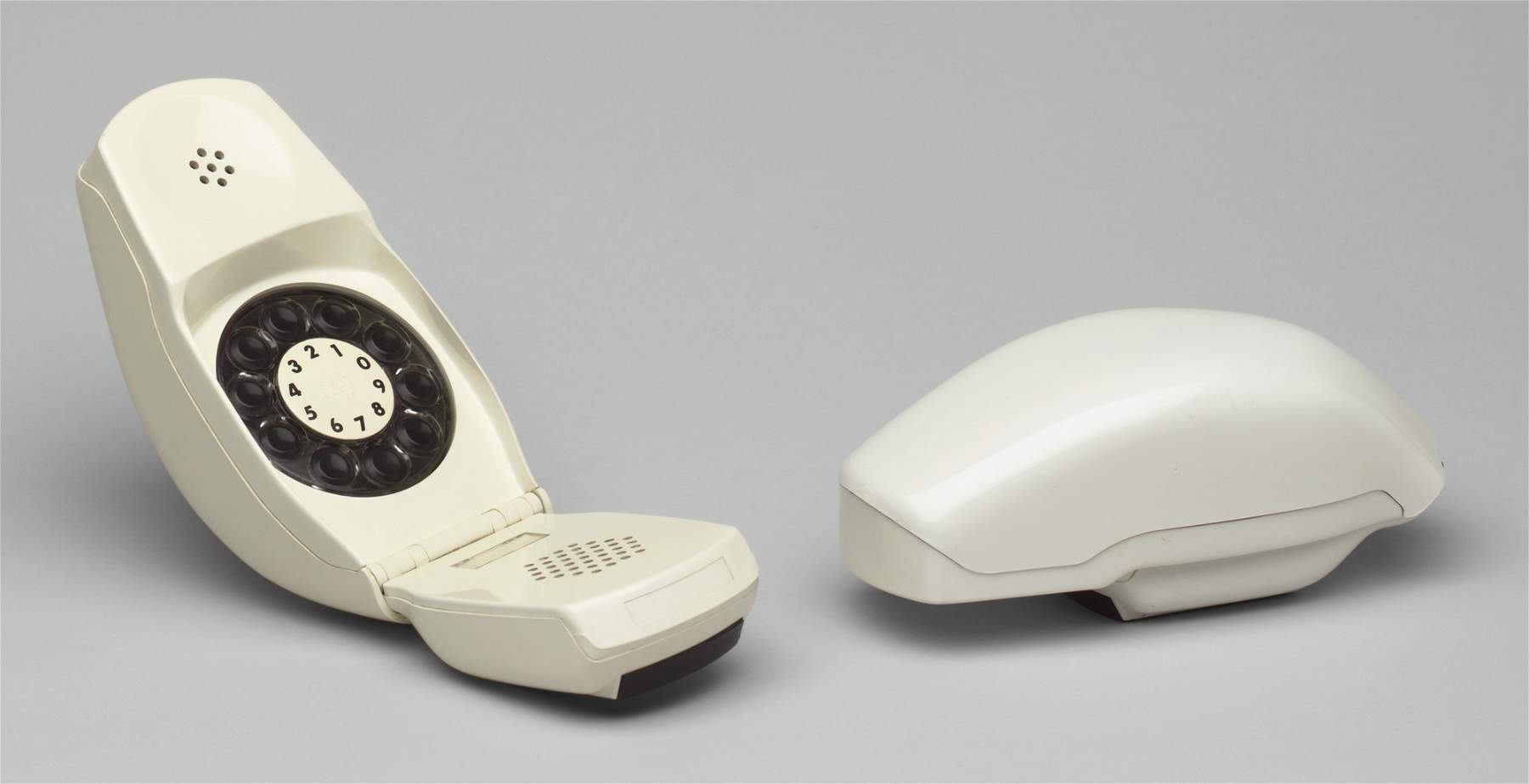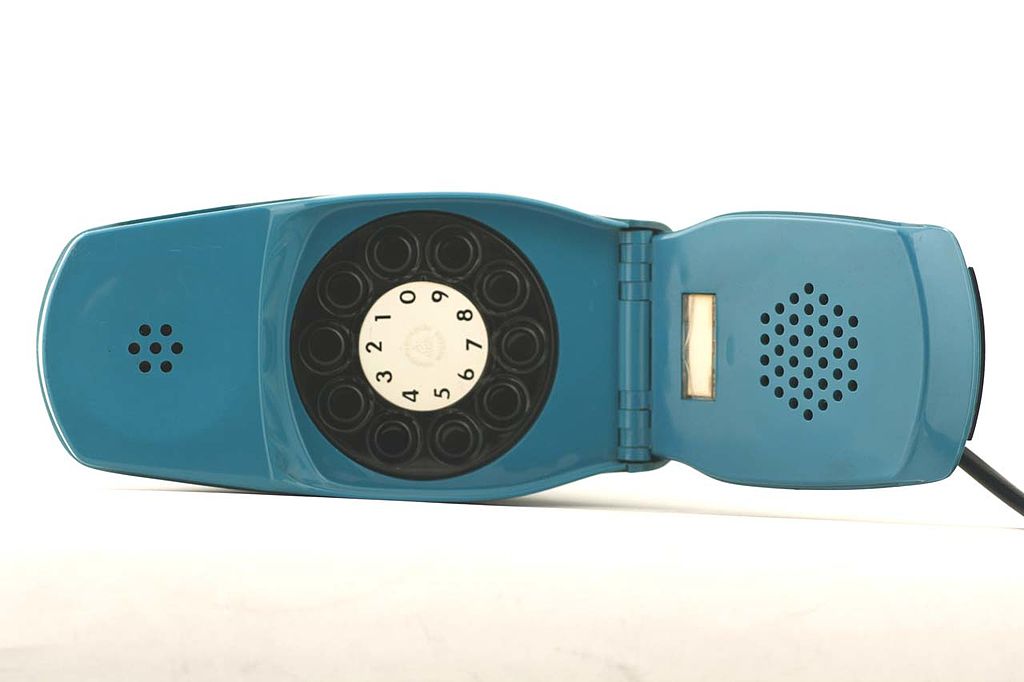When, in 1965, Marco Zanuso (Milan, 1916 - 2001) and Richard Sapper (Munich, 1932 - Milan, 2015) designed the Grillo telephone, making a phone call was not always a simple and easy operation; in fact, it required a device consisting of two elements: a fixed body that housed the dialer disk, which allowed the desired phone number to be dialed, and a handset containing the microphone that had to be gripped to answer the call. Such devices could be table-top, but also wall-mounted, making it so that the person sending or receiving the call could not move freely since he or she was bound to the device. For this reason, the research of designers and companies was veering toward the production of different models that differed from each other by meeting the needs of the public while remaining the same in operation.
Both Zanuso and Sapper were, in those years, recognized professionals, active in the world of industrial design, who had begun a prolific collaboration with each other, dialoguing with large companies in the sector and producing products recognized as innovative and avant-garde. Their joint work had already produced objects that later became iconic such as the Radio Cubo TS522 or the Doney Television for Brionvega, allowing them to prove their ability to combine design and technological research.


 Grillo
GrilloIn 1966 Grillo was produced by Siemens, a company with a long history in telecommunications technology and beyond, bringing with it several innovations that aroused great curiosity and success. The first is certainly the ability to succeed in integrating all functions in a single structure: in fact, the microphone, receiver and dialer disc are all contained in the same casing, enclosed within a kind of colored shell. The moment the clamshell was opened, through a snap-open system, its components were revealed: the receiver and disk were contained in the hand-holding part, and the microphone in the snap-open part. The hinged joint joining the two parts made it possible to initiate the call the moment the device was open and to terminate the communication the moment it was closed again. The telephone cord, on the other hand, ended in a plastic plug of the same color as the device (a stylistic finesse designed for a public that was increasingly refining its taste) inside which was placed the ringer, which, by recalling the sound of a buzzing sound, earned the telephone its very name “Cricket.”
This is not the first time that a telephone has been imagined to conceal its real function; in fact, Henry Dreyfuss’s Trimline, produced in 1965, anticipated this idea, although it remained a fixed telephone with a handset, while Grillo could be held entirely with one hand during conversation and was a handy and compact object.
The second major innovation is the technological research behind Grillo, which focused on minimizing the components so that they could be housed in a small casing. This enclosure, too, is a sign of an innovation that stems from the availability of new materials with which to experiment: it was made of ABS (Acrylonitrile-Butadiene-Styrene) plastic-a very strong material but with a very thin thickness (1 mm), which helped make it lighter. The size of Grillo was really small, just think that when closed it was 16.5 cm long, 8.3 cm wide and 7 cm high. When calling, the length became 22 cm, a measurement that allowed the distance between the mouth and the ear of the person making the call to be covered, solving the ergonomic mouth/ear relationship in a different way than traditional telephones.



All this causes it to be advertised as a phone “for display,” since it did not immediately reveal its function and presented a new, different, original form compared to other coeval devices. A telephone to have in every room, given the presence of multiple telephone sockets within some apartments, which helped to characterize the space, with its different color variations. An additional, accessory phone that could become “personal,” as different members of the family would be able to place it in the room they preferred, moving it around easily. It is precisely following this principle that SIP, the main telecommunications company in Italy, will offer for rent to its subscribers, in addition to the main landline telephone (the famous Bigrigio also produced by Siemens), also Grillo, a nice and colorful telephone, “made for the plug of your favorite corner,” as the advertisement read.
A year after its appearance on the market, in 1967, the ADI (Association for Industrial Design) awarded Grillo the Compasso d’Oro, not only for “the reduction of space, achieved without sacrificing the functionality of the object” but also for its modernity “demonstrated by its immediate success with the public due also to the psychological factor of intimacy that it allowed the user.” This modernity, which is still found today, also lies in having revolutionized and anticipated a way of making phone calls that will become widespread mainly from the 1990s onward, through cellular phones, and of having been the transitional element between the landline and the portable telephone, helping to make the phone call an increasingly private moment, being able to easily move the device from one room to another.
Finally, almost as a crowning achievement of its great success, in 1993 Grillo rightfully entered the permanent collection of the MoMa (Museum of Modern Art) in New York, proving that it has become a true symbol of modern design.
Warning: the translation into English of the original Italian article was created using automatic tools. We undertake to review all articles, but we do not guarantee the total absence of inaccuracies in the translation due to the program. You can find the original by clicking on the ITA button. If you find any mistake,please contact us.